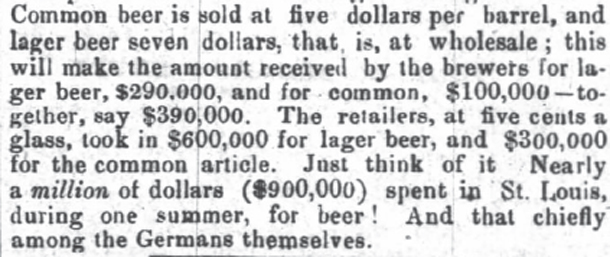MONDAY BEER LINKS, MUSING 10.26.15
I’m not sure if this is a bit of cheat, pointing to my own Twitter feed, but I am — because there’s more here than a dispense gimmick. The beer is equally striking.
Metropolotan beer bots ready for action at Wisconsin Craft Beer Festival. @CraftBeerBrew pic.twitter.com/4aEd8cabeb
— Stan Hieronymus (@StanHieronymus) October 23, 2015
Returning for Another Sip of Terroir.
“Part I: Beer is not the expression of a single terroir, but rather, by the very nature of its ingredients and production processes, a mélange of terroirs” and “Part II: Even if we decide, ultimately, that terroir is a red herring for brewers, drinkers, and writers, the issue of craft beer and its relationship to place is still worthy of debate, as complex an issue as it is.” I continue to feel that using the word “terrior” gets in the way when trying to talk about “beer from a place.” This is something I care about a lot, but even I sometimes feel like walking away from the conversation because it is so dang complicated to sort out. [Via A Tempest in a Tankard]
Forget InBev. Here Are the Markets Where Local Beers Rule.
Local (or at least regional)? Yes. But you’ll notice there is something very similar about the beers mentioned. [Via BloombergBusiness]
Boring Brewing : Bland Brewpubs Are Invading.
“My point to this ongoing rant is that as a small brewery I think there’s two ways to fall in the ‘good’ category. First be really good at what you do … everything you brew can be a legit beer that is satisfying regardless of when or who is ordering the beer. The second way is to be independently creative and have every beer you make demonstrate your passion for brewing. In other words make me think about the beer in my glass.” [Via SommBeer]
Now You Can 3D Print Things Using Beer.
And within an answer to why you would want to. [Via From Quarks to Quasars]
A Simple Graph Explains the Complex Logic of the Big Beer Merger.
AB InBev’s takeover of SABMiller viewed through the lens of business rather than beer, so a brand can be distinctive even if a beer is not. [Via Harvard Business Review]
Message in a Bottle.
Or How to Write a 1-Star Review
A sommelier writes about a perfume book, but the payoff is the 1-star reviews. Like this one: “If you drive a Moscow taxi at night, this one’s for you.” Or this: “Powerfully cloying and nauseating. Trails for miles. Frightens horses. Gets worse.” [Via Tim Gaiser]
